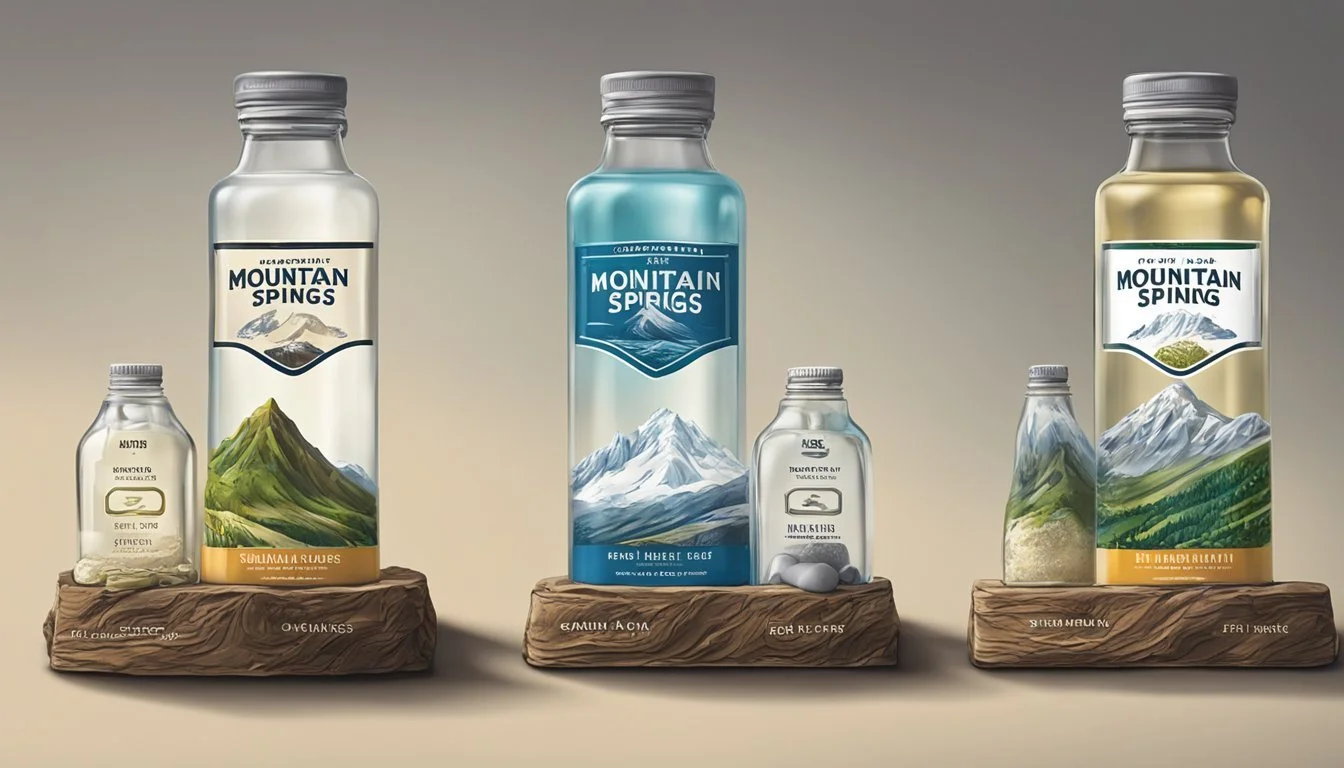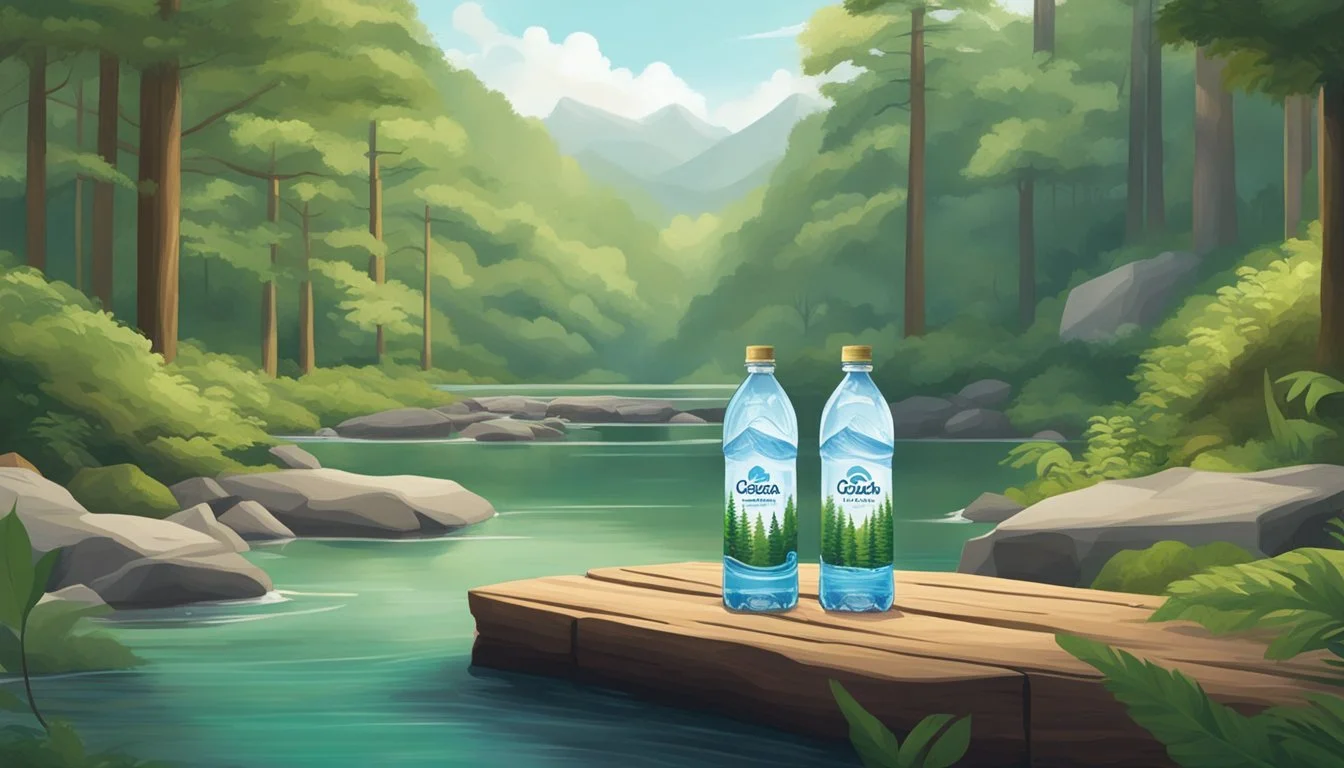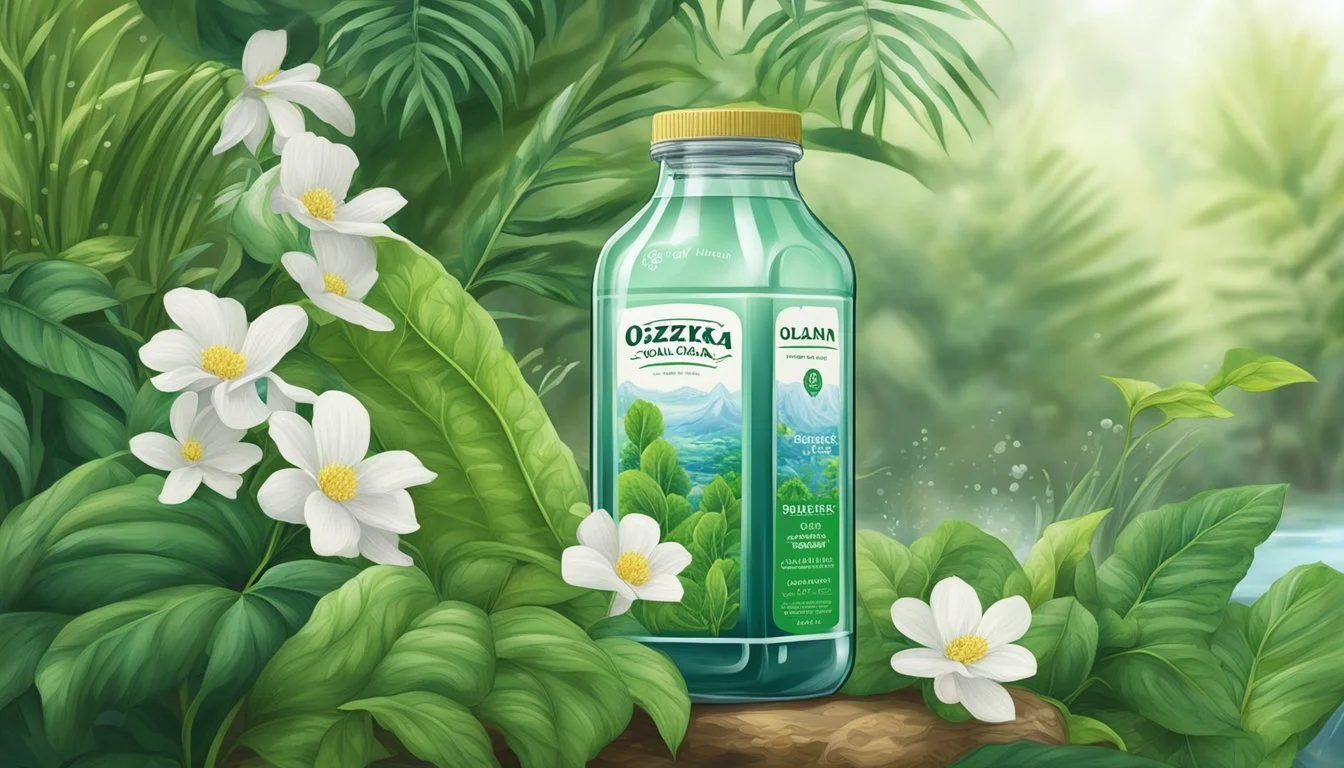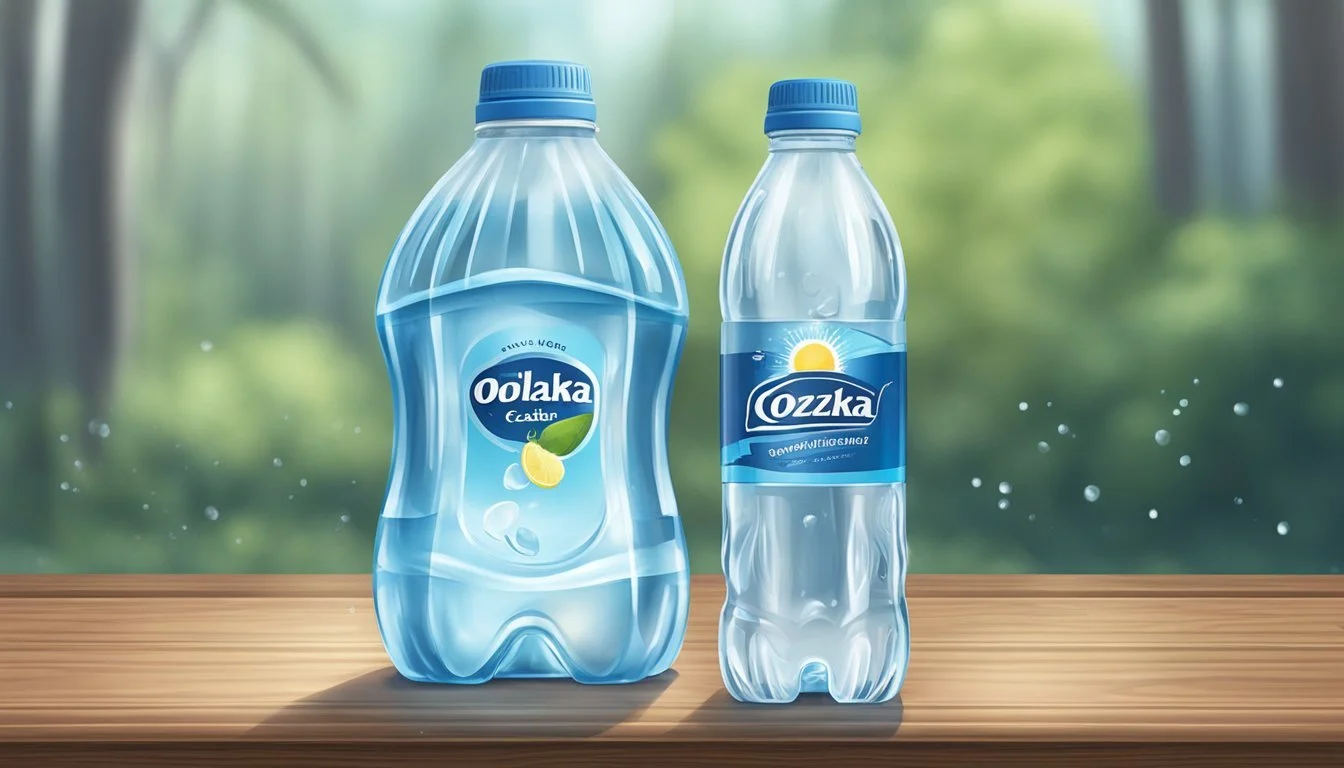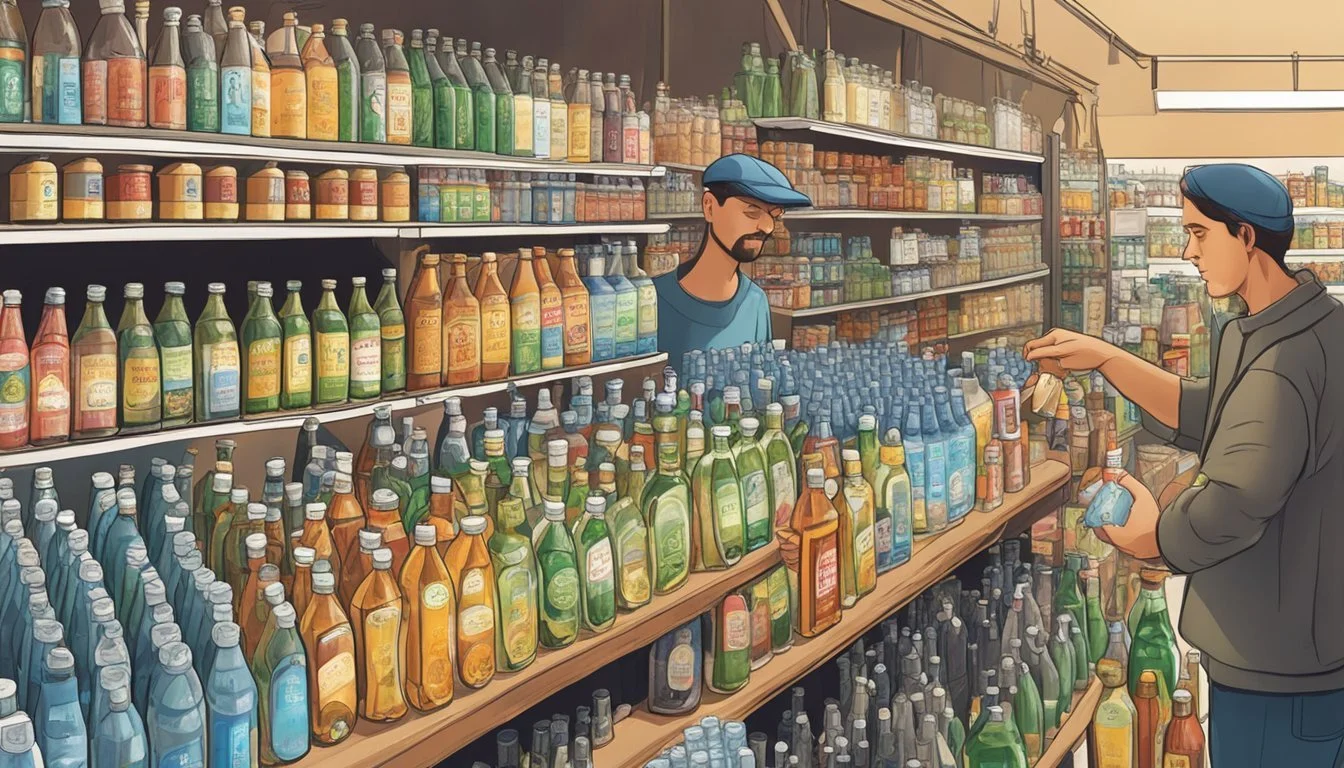Ozarka vs. Solán de Cabras
Comparing Quality and Taste in Bottled Water
Choosing between Ozarka and Solán de Cabras bottled water can be a challenge for consumers seeking both quality and taste. Ozarka, sourced from springs in Texas, offers a distinctly crisp and refreshing taste that has garnered a dedicated following in the southern United States. Solán de Cabras, on the other hand, hails from Spain and is renowned for its natural mineral content and smooth, clean flavor.
Ozarka's reputation is built on its commitment to providing 100% natural spring water without any additives. The brand is known for its affordable pricing and availability, making it a practical choice for regular hydration needs. Solán de Cabras distinguishes itself with its premium positioning, often found in fine dining establishments and praised for its purity and balanced mineral composition.
When it comes to selecting the better option, the decision may come down to personal preference and local availability. For those prioritizing a crisp, no-frills spring water experience, Ozarka stands out as a reliable choice. However, for those seeking a more luxurious and mineral-rich option, Solán de Cabras may be worth the splurge. The unique qualities of each brand ensure there is a bottled water to suit various tastes and occasions.
History and Origin
Exploring the backgrounds of Ozarka and Solán de Cabras reveals their distinct origins and rich histories. Both brands hail from regions with long traditions of water sourcing and cultural impact that continue to influence their modern identity.
Ozarka's Legacy
Ozarka was founded in 1905 in Eureka Springs, Arkansas. This brand has a long-standing tradition in the South Central United States. Its water comes from natural springs located in Texas, which provide a unique southern flavor profile. Originally providing jobs to the local community, Ozarka's presence significantly contributed to the economic fabric of Eureka Springs.
The brand's commitment to quality and natural sourcing has solidified its place in the bottled water market. Over decades, it has expanded distribution to states such as Arkansas, Oklahoma, Louisiana, New Mexico, Mississippi, and Missouri.
Solán de Cabras: A Spanish Tradition
Solán de Cabras boasts an impressive history, dating back over 3,600 years in the Serranía de Cuenca region of Spain. Its origins are deeply tied to the pure springs of Cuenca, an area historically significant to the Romans and later settlers. The brand's water is known for its purity, stemming from natural filtration over centuries.
This Spanish bottled water is celebrated for its authenticity and purity. The thunderstorm rainwater that cycles through the springs over millennia ensures a continuous supply of high-quality water. Solán de Cabras represents a blend of tradition and nature, cherished both in Spain and internationally.
Source and Natural Environment
Ozarka and Solán de Cabras both procure their waters from pristine natural environments, each offering unique characteristics that influence taste and purity.
The Springs of Ozarka
Ozarka draws its natural spring water from several springs across the state of Texas. This water source is renowned for its naturally occurring minerals, which contribute significantly to its taste profile and potential health benefits.
The water is collected directly from the spring and undergoes minimal processing to ensure that the natural properties are retained. The pristine environment around these springs, characterized by lush forests and minimal industrial activity, helps maintain the purity and quality of the water. Ozarka’s commitment to sustainable sourcing practices further ensures that the water remains a reliable choice for consumers seeking natural spring water.
Solán de Cabras Aquifer
Solán de Cabras sources its water from an ancient aquifer in the Serranía de Cuenca region of Spain. This underground aquifer, which has been tapped for over 3,600 years, is known for its mineral-rich composition. The local environment, characterized by mountainous terrain and limited human habitation, plays a crucial role in preserving the purity of this natural water.
The water emerges naturally from the aquifer, enriched with minerals that are believed to provide various health benefits. The aquifer’s depth and natural filtration through layers of rock add to its distinctive quality. Solán de Cabras’ historical reverence and careful stewardship of this water source underscore its reputation for purity and authenticity.
Mineral Content and Health Benefits
Ozarka and Solán de Cabras offer distinct mineral compositions, each bringing unique health benefits to the consumer. These differences can influence taste as well as nutritional value.
Analyzing Ozarka's Minerals
Ozarka water is sourced from Texas springs and is known for its fresh, crisp taste.
Calcium, which is vital for bone health, is present but in moderate amounts.
Ozarka also contains magnesium, important for muscle and nerve function.
Potassium, another key mineral for cardiovascular health, is found in small quantities.
There is a presence of sodium but in low concentrations, making it suitable for low-sodium diets.
Bicarbonate levels contribute to pH balance, offering slight alkalinity beneficial for neutralizing stomach acid.
The Mineral Composition of Solán de Cabras
Solán de Cabras, from Spain's Serranía de Cuenca, stands out for its unique nutrient profile.
It is rich in calcium, supporting strong bones and teeth.
The water contains significant levels of magnesium, enhancing enzyme function and energy production.
Potassium is present, aiding in fluid balance and heart function.
Sodium in Solán de Cabras is moderate, balancing hydration and electrolyte levels.
The high bicarbonate content helps detoxify and maintain a stable pH in the body.
This makes Solán de Cabras a choice for those looking for a well-rounded mineral-rich water option.
Hydration and Quality
Both Ozarka and Solán de Cabras offer quality hydration, but their approaches to water sourcing and purification methods set them apart. These differences influence their water quality standards and hydration properties.
Water Quality Standards
Ozarka sources its water from natural springs in Texas, ensuring it is pure and free from contaminants. The brand emphasizes natural filtration through the layers of earth and rock, which naturally remove impurities. This process maintains a balanced pH level.
Solán de Cabras, sourced from the Serranía de Cuenca in Spain, undergoes rigorous filtration to maintain high standards. Known for its exceptional purity, Solán de Cabras boasts low sodium levels and a unique mineral composition. Its natural filtration processes enhance the water's quality.
Hydration Properties
Ozarka's natural spring water features essential minerals and electrolytes like calcium and magnesium, which support effective hydration. These elements contribute to the taste and hydration properties, making it ideal for everyday consumption.
Solán de Cabras contains essential minerals such as calcium, magnesium, and bicarbonates, promoting balanced hydration. Its slightly alkaline pH level adds to its hydrating qualities, making it suitable for those seeking enhanced hydration and balance in their water intake. The water's smooth texture and mineral-rich profile appeal to both casual drinkers and athletes.
Taste Profile and Preference
Ozarka and Solán de Cabras offer distinct taste experiences. Evaluating these waters based on taste preferences and the nuances revealed in taste tests provides a clear picture of what consumers can expect from each brand.
The Taste of Ozarka
Ozarka is known for its crisp and clean flavor profile, sourced from natural springs in Texas. Many consider its taste to be slightly mineral-forward, providing a refreshing sensation. This is likely due to the specific mineral composition of the spring water.
Taste tests frequently highlight Ozarka’s ability to deliver a pure taste without the plastic-like aftertaste that can be off-putting in some bottled waters. It has a balanced pH level close to 7.0, which contributes to its neutral yet satisfying taste.
A notable characteristic is the subtle tang that some might detect, adding a unique nuance to its overall flavor. Preferences for Ozarka often stem from its reliability and the natural essence it brings to each sip.
Tasting Solán de Cabras
Solán de Cabras offers a distinctly different taste experience compared to Ozarka. Sourced from a single spring in Spain, it is celebrated for its smooth and silky mouthfeel. The mineral content in Solán de Cabras results in a slightly alkaline pH, typically around 7.4 to 7.8, which enhances its refreshing quality.
In taste tests, Solán de Cabras frequently stands out for its clean, almost sweet undertones, which many find to be a pleasant change from more neutral waters.
The gentle mineral taste is subtle and doesn’t overpower, making it a preferred choice for those who seek a delicate and refined flavor in their bottled water. Personal taste preferences often lean towards Solán de Cabras for its unique smoothness and refreshing properties.
Bottling and Packaging
Ozarka and Solán de Cabras utilize distinct bottling methods and packaging materials to cater to their consumer bases, emphasizing different values such as sustainability and aesthetics.
Ozarka's Bottling Process
Ozarka sources its water from springs in Texas and packages it primarily in recyclable plastic bottles. These bottles are designed for convenience and portability, making them easy to grab for on-the-go hydration.
The brand focuses on providing quality hydration at a reasonable price, often producing in large quantities. Ozarka has made efforts to incorporate recycled materials into their packaging, which helps reduce environmental impact. However, the primary emphasis remains on the functional benefits of their plastic bottles rather than premium aesthetics.
Solán de Cabras: Elegance in Packaging
Solán de Cabras stands out with its elegant packaging, using primarily glass bottles that exude a sense of purity and authenticity. The bottles are not only recyclable but also reusable, catering to environmentally conscious consumers who prefer a more refined presentation.
The brand's story and commitment to quality are reflected in its choice of materials. Each glass bottle is designed to maintain the integrity of the water while providing a premium experience. The packaging not only conserves the water's natural qualities but also enhances its overall appeal with a touch of sophistication.
Environmental and Sustainability Practices
When comparing the environmental and sustainability efforts of Ozarka and Solán de Cabras, it's crucial to examine their approaches to mitigating environmental impact, managing natural resources, and embracing sustainable practices.
Ozarka's Environmental Commitment
Ozarka has made notable strides in addressing its environmental impact. They prioritize recycling by using a significant percentage of recycled plastic in their packaging materials. They also encourage consumers to recycle used bottles through various campaigns.
Water sourcing is another critical area. Ozarka emphasizes sustainable water management practices to ensure the longevity and purity of their sources. They work closely with local authorities to monitor and protect water reserves.
In response to increasing concerns about plastic waste, Ozarka has invested in more sustainable packaging alternatives and is gradually transitioning to biodegradable materials. Their commitment to reducing their footprint is evident in their consistent efforts to improve and innovate within the sustainability space.
Solán de Cabras: Sustainability Initiatives
Solán de Cabras positions itself as a leader in sustainability. They are committed to protecting the natural resources where their water is sourced. This includes strict environmental conservation practices in the Serranía de Cuenca region, which has been their source for millennia.
The company also focuses on reducing carbon emissions throughout their production and distribution processes. They have implemented energy-efficient technologies and alternative energy sources in their manufacturing plants.
Packaging is another area of focus. Solán de Cabras utilizes eco-friendly materials and aims to minimize plastic use. They support bottle return schemes to encourage recycling and reduce waste. Their holistic approach ensures that each stage of their operation adheres to principles of sustainability and environmental responsibility.
Market Presence and Consumer Choices
When examining Ozarka and Solán de Cabras, it’s essential to consider their market presence and the choices consumers make regarding these brands. Key factors such as availability, popularity, branding, and consumer loyalty play significant roles.
Availability and Popularity
Ozarka, sourced from Texas, has a substantial presence in the United States. It is widely available in many grocery stores, convenience stores, and online retailers. This extensive distribution network ensures that consumers can easily purchase it in various locations across the country.
On the other hand, Solán de Cabras, spring water from Spain, is often found in more specialized or premium markets. Its availability in the U.S. is more limited, primarily found in high-end grocery stores, specialty shops, and select online platforms. This exclusivity can heighten its appeal but may also limit its reach compared to Ozarka.
Branding and Consumer Loyalty
Ozarka’s branding emphasizes its local roots and accessibility. This resonates with consumers looking for a reliable, everyday bottled water option. The brand’s marketing efforts focus on being a familiar presence in the American bottled water market, catering to a broad audience.
Solán de Cabras, with its heritage rooted in the Serranía de Cuenca, positions itself as a high-end, premium choice. Its branding highlights purity and authenticity, which appeals to consumers seeking a luxurious and high-quality water experience. The distinct, refined branding fosters strong consumer loyalty among those who prioritize premium, artisanal products over more common brands.
Guidance for Consumers
Choosing the best bottled water between Ozarka and Solán de Cabras hinges on individual preferences, lifestyle needs, and specific criteria such as taste, sourcing, and convenience.
Choosing the Right Bottled Water
When deciding between Ozarka and Solán de Cabras, consumers should consider several factors. Ozarka, sourced from Texas, is often available at a lower price point and is widely accessible at local stores, making it a convenient option. Solán de Cabras, on the other hand, is known for its premium quality and is often found in fine dining establishments, providing a unique, mineral-rich taste experience from Spain.
Taste preference is paramount. Ozarka offers a traditional, crisp spring water flavor, derived from multiple Texan springs, making it an everyday, reliable choice. Solán de Cabras presents a more refined palate with its unique mineral composition, catering to those who seek a more sophisticated water.
The Role of Water Sommeliers
Water sommeliers play an increasingly significant role in helping consumers choose the right bottled water. They assess and evaluate bottled waters like wine experts do with fine wines. For elite restaurants and fine dining, a water sommelier might recommend Solán de Cabras for its distinguished mineral profile and taste that complements gourmet dishes.
In contrast, Ozarka might be suggested by a sommelier for its pure, clean profile suitable for diverse culinary settings, including casual dining. Their expert advice can aid consumers in making more informed decisions that align with both health and lifestyle goals.
More About Ozarka
Mountain Valley Spring Water vs Ozarka: Which Bottled Water is Better?
Ozarka vs Kirkland Signature: Which Bottled Water is Better?
Ozarka vs Richard's Rainwater: Which Bottled Water is Better?
Ozarka vs Whole Foods Italian Still Mineral water: Which Bottled Water is Better?
More About Solán de Cabras
Acqua Pana vs Solan de Cabras: Which Bottled Water is Better?
Antipodes vs Solan de Cabras: Which Bottled Water is Better?
Aqua Carpatica vs Solan de Cabras: Which Bottled Water is Better?
Arrowhead vs Solan de Cabras: Which Bottled Water is Better?
Boxed Water vs Solan de Cabras: Which Bottled Water is Better?
Castle Rock vs Solan de Cabras: Which Bottled Water is Better?
Core Hydration vs Solan de Cabras: Which Bottled Water is Better?
Deer Park vs Solan de Cabras: Which Bottled Water is Better?
Hawaiian Springs vs Solan de Cabras: Which Bottled Water is Better?
Ice Mountain vs Solan de Cabras: Which Bottled Water is Better?
Icelandic Glacial vs Solan de Cabras: Which Bottled Water is Better?
Just Water vs Solan de Cabras: Which Bottled Water is Better?
Mountain Valley Spring Water vs Solan de Cabras: Which Bottled Water is Better?
Nestle Pure Life vs Solan de Cabras: Which Bottled Water is Better?
Poland Spring vs Solan de Cabras: Which Bottled Water is Better?
San Pellegrino vs Solan de Cabras: Which Bottled Water is Better?
Smartwater vs Solan de Cabras: Which Bottled Water is Better?
Solan de Cabras vs 1907water: Which Bottled Water is Better?
Solan de Cabras vs Alkaline88: Which Bottled Water is Better?
Solan de Cabras vs Big Chill: Which Bottled Water is Better?
Solan de Cabras vs BodyArmor: Which Bottled Water is Better?
Solan de Cabras vs Cascade Mountain: Which Bottled Water is Better?
Solan de Cabras vs CBD Living: Which Bottled Water is Better?
Solan de Cabras vs Crystal Geyser: Which Bottled Water is Better?
Solan de Cabras vs Crystal Lake: Which Bottled Water is Better?
Solan de Cabras vs Essence pH10: Which Bottled Water is Better?
Solan de Cabras vs Hawaii Volcanic: Which Bottled Water is Better?
Solan de Cabras vs Kirkland Signature: Which Bottled Water is Better?
Solan de Cabras vs Liquid Death: Which Bottled Water is Better?
Solan de Cabras vs Open Water: Which Bottled Water is Better?
Solan de Cabras vs Proud Source: Which Bottled Water is Better?
Solan de Cabras vs Pure Life: Which Bottled Water is Better?
Solan de Cabras vs Purely Sedona: Which Bottled Water is Better?
Solan de Cabras vs Richard's Rainwater: Which Bottled Water is Better?
Solan de Cabras vs Simple Truth: Which Bottled Water is Better?
Solan de Cabras vs Talking Rain AQA: Which Bottled Water is Better?
Solan de Cabras vs Weird Water: Which Bottled Water is Better?
Solan de Cabras vs Whole Foods 365: Which Bottled Water is Better?
Solan de Cabras vs Whole Foods Italian Still Mineral water: Which Bottled Water is Better?
Topo Chico vs Solan de Cabras: Which Bottled Water is Better?
Zephyrhills vs Solan de Cabras: Which Bottled Water is Better?


